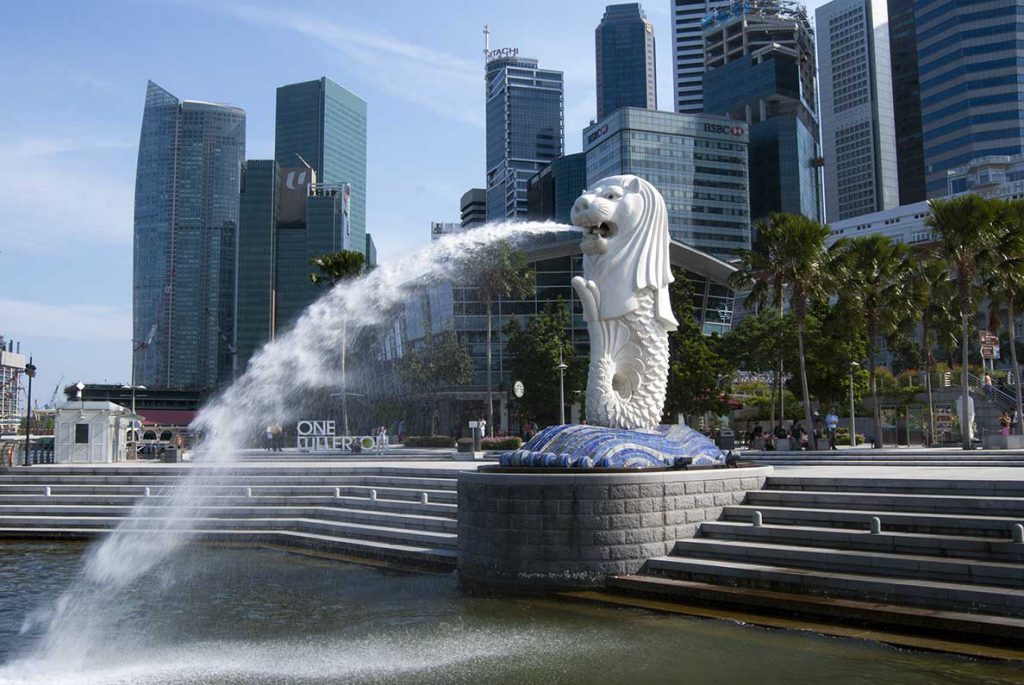Pegging the Ringgit to USD may stop it from dropping further, but here’s the catch.

- 491Shares
- Facebook448
- Twitter8
- LinkedIn9
- Email9
- WhatsApp17
Question: If you’re Singaporean, what do you do when a Malaysian gets snarky about your nasi lemak? Or make jokes about recycling your own piss? Why, pull out the ol’ 1 singdollar = 3 ringgit joke, of course! Pfft.

It’s a comeback that’s perhaps as old as our MPs (and maybe just as tired), but we may soon be hearing updated versions of the joke. Recently, the ringgit made like D O double G and dropped like it’s hot, slipping to RM3.15/SGD and RM4.32/USD in April, the lowest it had been in 5 years. Analysts then expected it to drop further for the next few months, and they don’t seem to be wrong so far: as of the time of writing (May 27), the rate is RM3.20/SGD and RM4.40/USD.
The drop worried some people, which is perhaps why Dr Mahathir had suggested pegging the ringgit to the US dollar like we once did from 1998-2005. However, various experts as well as the BNM had since rejected the idea, saying that it’ll make things worse. There’s a whole drama to the situation, but if you’re like us, you’ll probably just go ‘lmao pegging‘ and move on with your lives.
That has to stop, because how can we expect to be an advanced, progressive nation if we don’t care about pegging? So to open us up to the pegging conversation, today we’ll be looking at currency pegging and its issues, and don’t worry: we’ll try to make it as painless as possible.
Starting from the very bottom…
Pegging is essentially ✨manifesting✨ the value of your money

First we need to disclaim that a lot of this article had been simplified as much as possible to make it slide in easier, so maybe don’t use us as a reference for your PhD thesis. Anyway, when it comes to determining how much a currency is worth, there are commonly two ways of doing it: either have the market decide how much it’s worth (called a floating exchange rate), or fix the value to something like gold, a bunch of other currencies, or another, more stable currency (called a fixed exchange rate).
Pegging the ringgit is then moving from a floating exchange rate, which we’re doing now, to a fixed exchange rate, where we fix – or peg – the value of our money to another, in this case US Dollars. To do that, we basically decide that 1 USD is a certain amount of ringgit – for example, back in 1998, we pegged the ringgit at RM3.80/USD – and it will stay that way as long as the peg remains active (or if we decide to revise the peg). Wah so convenient! Why don’t we just peg at RM1/USD and call it a day then? That’ll show those Singaporeans!

Well, when it comes to pegging, we have to put our backs into it a bit more lah. To actually get any benefit from pegging, the peg has to be realistic. One way to look at pegging is that it’s a delicately controlled floating rate: the value of the ringgit still kinda fluctuates in a peg, subject to supply and demand, but that supply and demand is carefully controlled by the central bank, which is Bank Negara Malaysia (BNM) in our case. For example, say we fix the peg to RM4/USD. BNM will have to monitor how much ringgit is available in the market, and sell or buy up ringgits using foreign money in its reserves (USD if pegging to USD) to maintain the peg.
- if the value of the ringgit drops, they have to buy up ringgits to make it scarcer, driving up demand.
- if the value of the ringgit rises, they have to sell away ringgits to make it it more common, lessening its value.
So if we set the peg at something unrealistic, like RM1/USD or something, the amount of work and reserves that’s needed to raise the value of the ringgit that much will probably outweigh any benefit we’ll get from it, which is why we’ll probably peg it at something close to the current value. So in a sense it’s still ✨manifesting✨, except within realistic means and with a lot of effort put into making it happen. Now that we’ve established more or less how pegging works, the next thing to note is that…
Except for Mahathir, most people seem to be against the idea of pegging

Pegging does have its advantages, based on the situation: some countries do it for convenience when trading to the US, while others keep their currency lower than the USD to achieve competitive pricing when exporting to the US. But perhaps the most common motive for pegging would be relative stability: if a peg is in place, businesses and the government can plan their trade without worrying about the exchange rate dropping or rising suddenly. This stability is arguably more attractive to investors.
With the recent drop, Dr M had again called for a repegging of the ringgit, basically saying that if we can do it back during the Asian Financial Crisis, we should be able to make it work now, as we are in a better financial situation – and have more US dollars in our reserves – than we had back then.
“There should be no shortage of US dollar when needed. There were problems [back then] of course. But we were able to set up subcommittees to deal with them in 1998. This included the recapitalisation of banks and businesses,” – Dr Mahathir, as quoted by the Malaysian Reserve.
However, despite the advantages to be gained from pegging, it seems that the cons outweigh the pros. BNM, for one, had said that they won’t be doing it, as it’s not in Malaysia’s best interests. According to BNM governor Nor Shamsiah Mohd Yunus, one of the reasons for this is that we’ll lose our independence when it comes to monetary policies, as we’ll have to follow the policies of the country we’re pegged to. For example, she mentioned that if the US raises its rate by 2%, Malaysia would have to raise by 2% also, even if our economy is weaker.

There’s also the problem of maintaining the peg itself. Former BNM deputy governor Dr Sukhdave Singh had warned that should our financial system and central bank be unable to meet demands for the USD at the pegged exchange rate, a black market for the USD will develop, undermining the official peg. There’s also the possibility of currency speculators – people who buy foreign currencies to sell them later when they’re stronger – testing the peg, making it harder to maintain.
“In all cases, the central bank will have to back the peg by intervening with its foreign currency reserves. So, it had better have a lot of reserves because it is going to need them to defend the peg. To overcome these problems, during the AFC, we did not just stop at the peg. We also introduced capital controls to limit capital outflows by residents and non-residents. We also had to undertake numerous other measures to address speculation and capital flight, including the demonetisation of the RM500 and RM1,000 currency notes,” – Dr Sukhdave Singh, as quoted by the Edge Markets.
Other economists have also pointed out that there’s no real need for a peg at the moment as well, since the situation now is different from 1998. Unlike back then, when the ringgit’s value dropped due to currency speculators, the current slump had been said to be due to ongoing crises, like the Ukraine-Russia war, the resurgence of the pandemic in China, and inflation spikes in the West. Using the same solution for different problems might not be the best idea, and it may actually hurt the economy as such an unnecessarily drastic measure could end up driving away foreign investors.
Well, that’s the overly simplified version of a complex issue, but at the end of the day, we should remember that…
Pegging isn’t the only solution to our ringgit woes

For the time being, it seems that BNM’s stance is to not peg the ringgit to a certain value, but rather maintain it within a range so that it doesn’t swing wildly out of control. In other words, they’re keeping the value of the ringgit flexible, which does have its benefits: in uncertain times like these, it can adapt to major developments and help cushion some of the resulting economic shocks.
Still, if we’re worried about ringgit slowly declining, it’s worth noting that the value of a currency depends on a host of factors, such as political and economic stability, the balance between imports and exports, the demand for our goods and services, GDP, and our level of debt, to name a few. Raising the value of the ringgit – or even just maintaining it – may mean improving any or all of these factors, so it’s at the end of the day it’s probably not a problem that can be fixed with pegging alone.
“…I would like to reiterate that we need to continue implementing structural reforms to strengthen out growth potential and economic prospects. This would make Malaysia a more attractive investment destination. As a consequence, the larger foreign direct investment and portfolio inflows, and higher output generated will naturally support the ringgit. We must therefore focus on building a stronger, more sustainable economy with improvement in living standards.” – Tan Sri Nor Shamsiah Mohd Yunus, BNM governor, to Bernama.
Until that happens, just endure the jokes, we guess.
- 491Shares
- Facebook448
- Twitter8
- LinkedIn9
- Email9
- WhatsApp17
